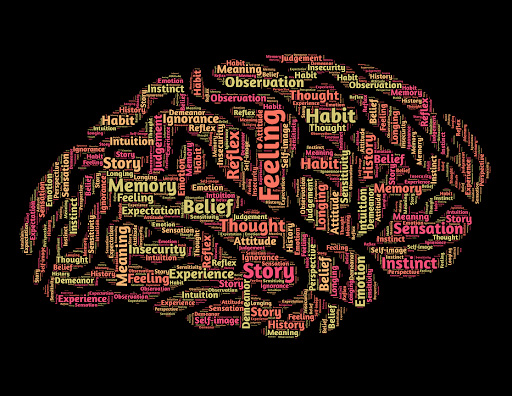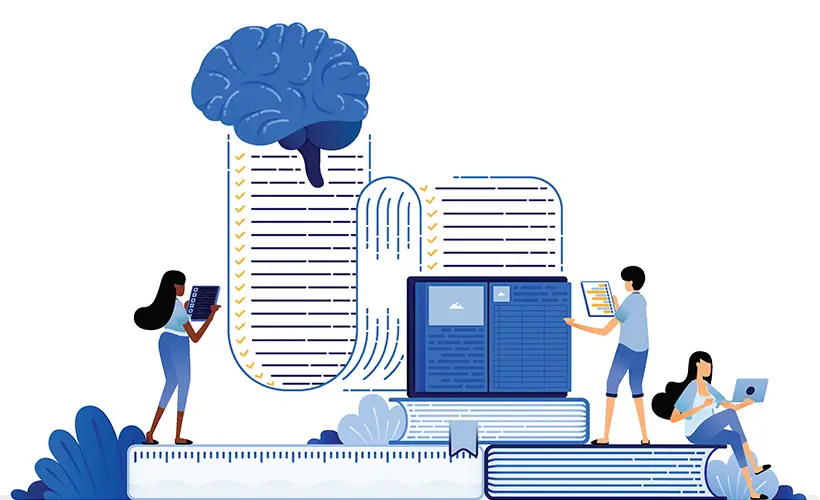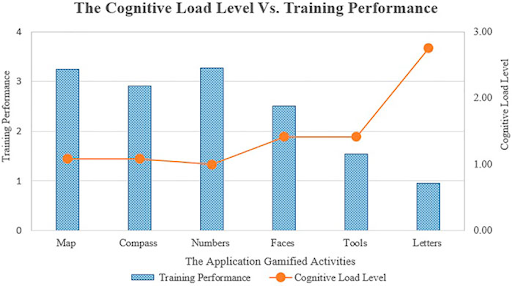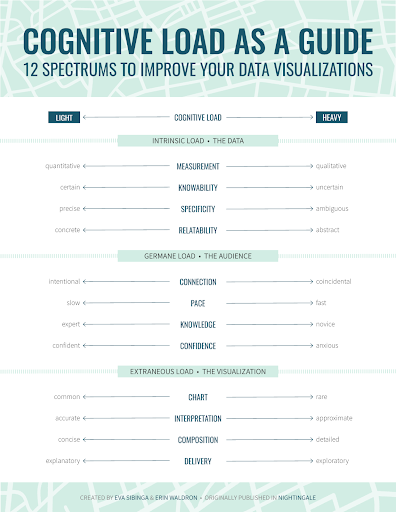Teachers, at any level, are often undervalued and face constant challenges to connect and communicate with their students. With so many different approaches that “guarantee” success, how does a teacher or lecturer choose the one that best suits them and that will let students achieve the objectives set out in a particular course?
There are multiple educational theories out there, some of them with tried-and-tested histories, others that exist on the fringe of evidence-based practice. You may want to look into things such as convolutional neural networks as part of your own learning process.
These many theories may deal both with teaching methods and learning methods. The potential road to success may lie in finding a marriage of sorts, a route where students can make recognizable progress due to the methods used by their teacher.
One theory that’s central to many learning patterns is cognitive load theory. Just what is cognitive load theory, and how do teachers, lecturers, and instructors ensure that they can manage students’ cognitive load within the context of their teaching plans and how they use and present materials in any sort of classroom environment?
What Is Cognitive Load Theory?
CLT has been around since the late ‘80s. First proposed by John Sweller, it’s a theory that focuses on how our brain processes and stores information as well as on an idea of how much current information the human memory can deal with. It’s important in the field of learning in the context of helping teachers deal with reducing the cognitive load of their students so that they can help them process new information.
Sweller proposed that optimum learning occurs when the teaching/learning environment and framework are aligned with the human cognitive capacity. Optimum learning means that more information is processed and stored accurately. CLT revolves around a number of theories that deal with how the human mind processes and stores information, including:
- Human memory consists of two main parts: working memory (what we use in the present) and long-term memory (more dormant memories that we may access as needed).
- As we absorb “new” knowledge, it places a cognitive load on our working memory, and how we deal with that can affect the learning outcomes currently being undertaken.
- Some knowledge is stored in the form of schemas in our long-term memory.
What Is Cognitive Load?

Think about your laptop or desktop computer for a minute. You know that you have a certain amount of space on that device to store music, videos, and other files. Once that space is used up, then you can’t add anything else at that point. Cognitive load is, sort of, the human equivalent, and it refers to how much information our working memory can hold at one time (you could think of your long-term memory as an external hard drive).
Sweller theorized that, just like a computer, your working memory had a limited capacity at any one point in time. Because of this, teaching methods or other educational inputs had to be cautious not to overload our brains with information and/or activities that weren’t directly related to desired learning outcomes.
When a student receives information from whatever educational inputs they’re accessing, that information brings with it a cognitive load that challenges the human brain to process it in a meaningful way where the student actually learns from that info. When listening, watching, or reading such info, students will use their working memory to process and hold that info in their short-term memories.
Within the context of learning as a whole, it needs to be recognized that, while working memory only offers limited capacity when it comes to processing info received, it plays a pivotal role in the overall learning process, and retention of that info may be affected where the data being received are overly complex or are presented in an overly complex way.
What this means within the reality of educational frameworks and settings is that those delivering the educational material must always be conscious of learners’ potential and capacity to retain the info being delivered and must ensure that they deliver it in such a way, and at such a speed, that maximum retention is possible. Remember that one of your primary aims is to empower your students, both to learn from you and to learn for themselves.
How to Reduce Cognitive Load

1. Preparation
Preparation plays a major role in constructing teaching/learning plans. It not only ensures that you’re including materials relevant to the subject and learning stage, but it can also go a long way toward helping in reducing the cognitive load. It’s also always worth having a checklist that you can refer to before commencing any teaching.
a. Have you included enough detail?
Does the structure suit both you and your students? No two teachers are the same when it comes to structure, and you should first ensure that the structure is one that you’re comfortable with while not overloading your students with info. For example, you may be teaching about a virtual business phone system or the pros and cons of various business VoIP providers, so you want to cover all relevant details on any system or provider.
b. Do you know your students?
It can be easy to always call on students who “lead” the class in terms of pertinent knowledge and learning progress. However, you should also recognize those students who may not regularly contribute. This sets a balance, encourages discussion, and can instill confidence in all of your students.
c. Clear your workspace
Whether conducting in-person or online teaching, your workspace should only contain items that contribute to your teaching and will not distract you. This also includes nonphysical aspects of your workplace, such as sunlight in your eyes or background noise. Your workspace should mainly include relevant items, such as a clock, pens, notepads, and any teaching materials needed.
d. Check your tech
Many teachers rely on some form of tech nowadays. That can include overhead projectors, laptops for presentations, tablets, and so on. Check that any tech you use is ready prior to class commencing, and also double-check the materials you may have prepared. If you’re teaching online, ensure you have chosen the best of the VoIP providers available.
e. Last-minute cockpit check
Just as a pilot carries out last-minute pre-flight checks, so you should allow some time before teaching starts to run over all aspects of your checklist. This can also help you focus on the lesson ahead, and that state of mind can carry over to your students. If you appear ready, relaxed, and comfortable, then your students may feel the same.
2. Teaching process

Once you’ve started teaching, it does help (both you and your students) if you have a process that you follow throughout the lesson. It can be easy to become distracted or to go “off-plan,” and this is something that will affect both your teaching and the cognitive load placed on the students. There are several things you should consider, including within teaching time.
a. Encourage familiarity
You want your class to have a community feel, so encourage the use of first names (this can include yours if you wish). Have a round of introductions, and have students use names when discussing or debating with each other. Where this can have an impact on cognitive load is that familiarity with names will be stored in long-term memory, thus freeing up working memory to focus more on learning.
b. Don’t be complicated
Make both your subject matter and any questions as concise as you can. Overcomplicating either will increase cognitive load and decrease the likelihood of absorbing new knowledge. Where you can’t avoid complexity, try and expand on your points and questions to make them more understandable. For example, if you’re discussing a subject such as common reasons for website downtime, keep it as simple as possible.
c. Let students ask follow-up questions
Much of what you present may be new to your students. There’s also the fact that sometimes complex points and questions are unavoidable. By encouraging your students to ask follow-up questions, you can foster discussion as well as clarity and can decrease the cognitive load placed on them. It can also help your students develop critical-thinking skills.
d. Stay on course
While you should encourage discussion, it can be essential to maintain a linear pattern within any lesson. That means dissuading students from revisiting points raised earlier in the lesson, as that can disrupt other students and upset their train of thought. Where students do want to revisit earlier points or are unsure about them, encourage them to ask you post-class.
e. Encourage insights
It’s not only you who can help reduce cognitive load. There will be times when students have insights that can help not only them but other students, too. Encourage students to express themselves when they feel they have insights that add to the learning process while at the same time dissuading them from deviating too much from the subject at hand.
4. Recognize hurdles and weaknesses
You’re not perfect; there may be times when you’re unsure how to progress even when you have constructed a good teaching plan. Rather than letting these moments block the teaching process, try and use the time for group activities while you find your bearings. Be honest and let your students know that you’re considering the best way to proceed.
3. Post-learning tactics

Of course, you should always think about what happens after the class is over. Should you practice reflection to identify areas for potential improvement and validate areas where you have done well? There are some things you should take into consideration, including:
a. Perfection may be unattainable
Be kind to yourself. Perfection is perhaps idealistic. Think about your lesson and look at ensuring the material and methods used were challenging enough without being too challenging. Mistakes will happen, and it’s more a case of learning from those mistakes and ensuring students learn the most they can from each lesson. See if you can adopt ideas, such as attribution modeling from the business world, and use them within the learning process.
b. Be kind to yourself
Self-care is essential. Stress, worry, and overwork will do neither you nor your students any favors. Make sure you focus on things such as a good diet, enough sleep, and free time for yourself. You can’t guarantee to be 100% for every lesson, but you can try and keep yourself as close to that as possible.
c. Have some fun
It may seem obvious, but a great way to reduce the cognitive load is to introduce an element of fun into the learning process. Of course, how you incorporate it will depend very much on the subject matter, but there’s always room for a little humor. You could also introduce competitive aspects or group activities that offset the “seriousness” of any lesson. A good teacher can find fun aspects even when discussing something as dry as corporate phone systems.
The Takeaway

For many people, teaching is more than a job. It’s a calling. They’ll look for ways to make their teaching better and reduce the cognitive load on their students. Depending on the teaching setting, there may even be opportunities for students to leave reviews and feedback. Teachers can learn from other sectors and read about people who review apps to see how they can optimize their own performance.
Just as many businesses look to partner marketing, teachers should partner with their peers to share ideas and solutions when it comes to reducing cognitive load. Two different teachers may have different parts of the puzzle that fit together to provide an ideal solution.
For a business, finding a solution can often be straightforward. If they need a virtual business phone system, then they simply look at their needs and what’s available on the market. In the field of teaching, finding the solutions they need can be a little more challenging.
See also:





